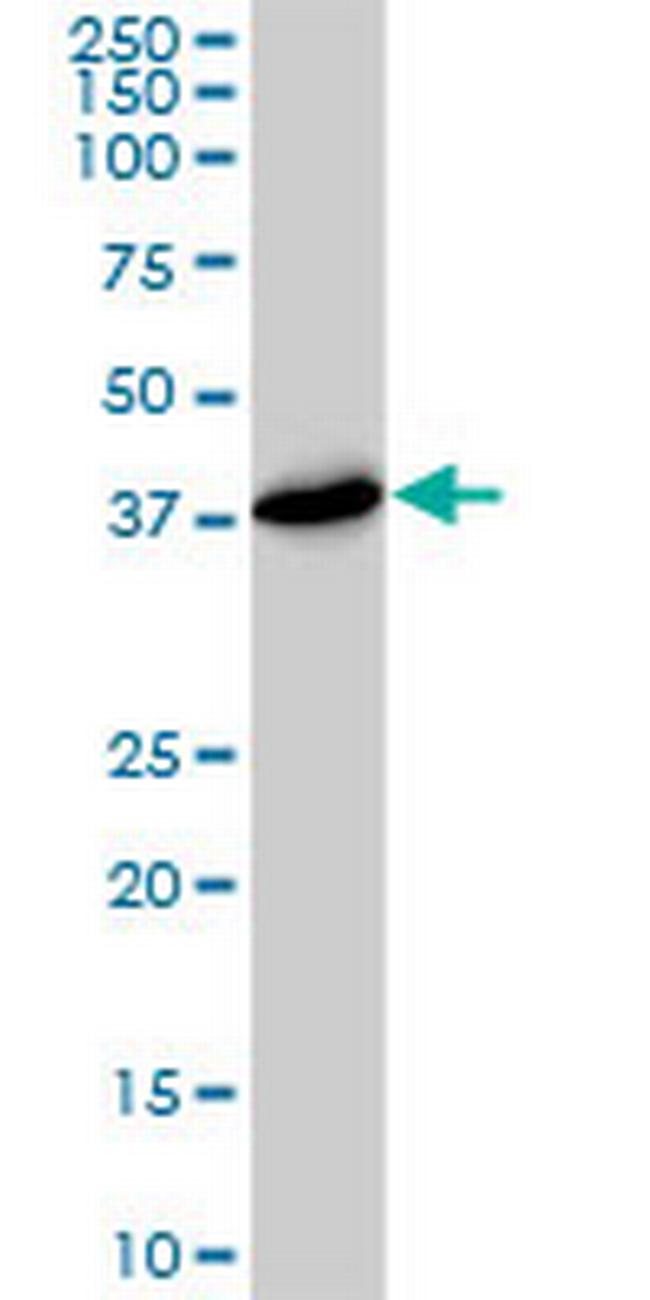Product Details
H00005713-M01
Species Reactivity
Host/Isotype
Class
Type
Clone
Immunogen
Conjugate
Form
Concentration
Purification
Storage buffer
Contains
Storage conditions
Shipping conditions
Product Specific Information
Product may be used with Western Blot (Cell lysate).
Immunogen sequence: MPELAVQKVV VHPLVLLSVV DHFNRIGKVG NQKRVVGVLL GSWQKKVLDV SNSFAVPFDE DDKDDSVWFL DHDYLENMYG MFKKVNARER IVGWYHTGPK LHKNDIAINE LMKRYCPNSV LVIIDVKPKD LGLPTEAYIS VEEVHDDGTP TSKTFEHVTS EIGAEEAEEV GVEHLLRDIK DTTVGTLSQR ITNQVHGLKG LNSKLLDIRS YLEKVATGKL PINHQIIYQL QDVFNLLPDV SLQEFVKAFY LKTNDQMVVV YLASLIRSVV ALHNLINNKI ADRDAEKKEG QEKEESKKDR KEDKEKDKDK EKSDVKKEEK KEKK
Target Information
Proteolytic degradation is critical to the maintenance of appropriate levels of short-lived and regulatory proteins as important and diverse as those involved in cellular metabolism, heat shock and stress response, antigen presentation, modulation of cell surface receptors and ion channels, cell cycle regulation, transcription, and signaling factors. The ubiquitin-proteasome pathway deconstructs most proteins in the eukaryotic cell cytosol and nucleus. Others are degraded via the vacuolar pathway which includes endosomes, lysosomes, and the endoplasmic reticulum. The 26S proteasome is an ATP-dependent, multisubunit (approximately 31), barrel-shaped molecular machine with an apparent molecular weight of approximately 2.5 MDa. It consists of a 20S proteolytic core complex which is crowned at one or both ends by 19S regulatory subunit complexes. The 19S regulatory subunits recognize ubiquitinated proteins and play an essential role in unfolding and translocating targets into the lumen of the 20S subunit. An enzymatic cascade is responsible for the attachment of multiple ubiquitin molecules to lysine residues of proteins targeted for degradation. Several genetic diseases are associated with defects in the ubiquitin-proteasome pathway. Some examples of affected proteins include those linked to cystic fibrosis, Angelman's syndrome, and Liddle syndrome.
For Research Use Only. Not for use in diagnostic procedures. Not for resale without express authorization.
References (0)
Bioinformatics
Protein Aliases: 26S proteasome non-ATPase regulatory subunit 7; 26S proteasome regulatory subunit RPN8; 26S proteasome regulatory subunit S12; Moloney leukemia virus-34 proviral integration; Mov34 homolog; Mov34 protein homolog; proteasome (prosome, macropain) 26S subunit, non-ATPase, 7 (Mov34 homolog); Proteasome subunit p40
Gene Aliases: MOV34; MOV34L; P40; PSMD7; Rpn8; S12
UniProt ID: (Human) P51665
Entrez Gene ID: (Human) 5713

Performance Guarantee
If an Invitrogen™ antibody doesn't perform as described on our website or datasheet,we'll replace the product at no cost to you, or provide you with a credit for a future purchase.*
Learn more
We're here to help
Get expert recommendations for common problems or connect directly with an on staff expert for technical assistance related to applications, equipment and general product use.
Contact tech support

